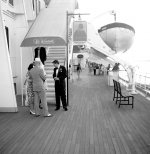Pherdinand
the snow must go on
I have a question:
Knowing the rather limited speed in the medium format lenses (f/3.5+ for the mamiya 6 and 7's) combined with the wide(ish) angle like 50 to 80 mm and the fact you can't really focus close with these systems - i wonder if you really cvan have selective focus with a mamiya 6 or 7 system. Meaning thin enough DOF.
I'm not talking about using the 150mm lens, but more the wide to normal ones.
Examples would be welcome too.
thanks
Knowing the rather limited speed in the medium format lenses (f/3.5+ for the mamiya 6 and 7's) combined with the wide(ish) angle like 50 to 80 mm and the fact you can't really focus close with these systems - i wonder if you really cvan have selective focus with a mamiya 6 or 7 system. Meaning thin enough DOF.
I'm not talking about using the 150mm lens, but more the wide to normal ones.
Examples would be welcome too.
thanks
T
Todd.Hanz
Guest
I do allright at f4:
Mamiya 7II, 80/4



Todd
Mamiya 7II, 80/4



Todd
rogue_designer
Reciprocity Failure
because of the larger negative size, that f3.5 or f4, really acts like f2-ish on a 35mm camera from a DOF perspective
DOF calculator
http://www.dofmaster.com/dofjs.html
DOF calculator
http://www.dofmaster.com/dofjs.html
Last edited:
T
Todd.Hanz
Guest
rogue_designer said:because of the larger negative size, that f3.5 or f4, really acts like f2-ish on a 35mm camera from a DOF perspective
DOF calculator
http://www.dofmaster.com/dofjs.html
...and the closer you get, the shallower the DOF.
Todd
Finder
Veteran
rogue_designer said:because of the larger negative size, that f3.5 or f4, really acts like f2-ish on a 35mm camera from a DOF perspective
DOF calculator
http://www.dofmaster.com/dofjs.html
Maybe it is the longer focal lengths?
Pherdinand
the snow must go on
yes but that's the point, with these lenses you can't get very close, unlike with many MF SLR lenses e.g..
Also, the bigger neg means smaller magnification too, that compensates a bit for the reduced DOF, i mean the same blurry things seem less blurry at a lower magnification of a 6x6 neg...
thanks
Also, the bigger neg means smaller magnification too, that compensates a bit for the reduced DOF, i mean the same blurry things seem less blurry at a lower magnification of a 6x6 neg...
thanks
Finder
Veteran
Pherdinand said:yes but that's the point, with these lenses you can't get very close, unlike with many MF SLR lenses e.g..
Also, the bigger neg means smaller magnification too, that compensates a bit for the reduced DOF, i mean the same blurry things seem less blurry at a lower magnification of a 6x6 neg...
thanks
Magnification does not change with format. With a given FOV and aperture, the larger the format, the shallower the DOF.
Mackinaw
Think Different
Well, my old Mamiya 6 folder hardly qualifies as new (this is the early 1950's variety) but it still takes good pics. Here's a pic I took a few days back from the deck of the Queen Mary which is currently moored at a dock in Long Beach, California. Taken on Ilford Delta 100 film in Rodinal, F4.0 @ 1/50th or so. Shows the shallow depth-of-field rather well I should say.
Jim Bielecki
Jim Bielecki
Attachments
Pherdinand
the snow must go on
Finder said:Magnification does not change with format.
What i was meaning, a 30x30 cm print is magnified only less than 6x from a nominal 6x6 negative, while if you use 35mm film (2.4x2.4) it is over 11x magnified.
iml
Well-known
Narrow DOF is certainly no problem with my 3.5 Rollei, I use it that way almost exclusively. DOF is narrower at all apertures than with 35mm, IME.


Ian


Ian
Share:

